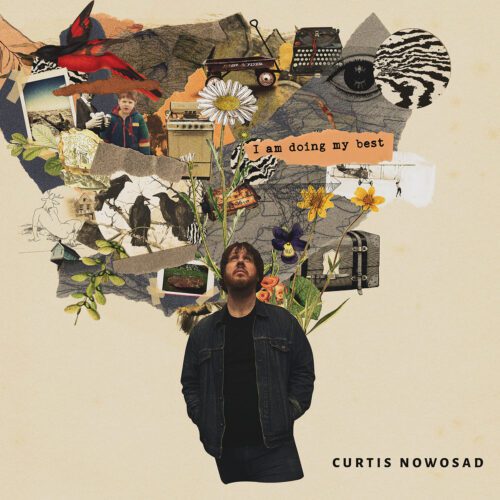The first Satosphère event of the MUTEK 2023 festival features a double program, with the audiovisual projects Metaract and Iwakura. The former is, according to MUTEK’s website, “an exploration of the duality between analog and digital”, and the latter, “a supernatural journey to rediscover the transcendence of nature.”
Photo credits : Ash KG
Metaract

Metaract is the first of two presentations, created by Japanese artists Manami Sakamoto and Yuri Urano. It’s an immersive film focused on nature which, in the context of the SAT, certainly questions the relationship between the natural and technological worlds.
From a dust particle in nothingness, to a drop of water in a freezing river, to a lump of earth in a forest, we seem to be taken through all the states of matter, as if we were experiencing them in first person. Things move slowly, even if it feels like we’re crossing universe-scale time jumps in the space of 20 minutes or so. What’s more, the exploratory but still modest tone of this rather abstract representation of nature is reminiscent of the curious and avid lens towards nature shown in Terrence Malick’s films, in particular The Tree of Life (2011) and his recent documentary Voyage of Time (2016).
The music remains fairly calm, with ambient layers that place us in a space without beginning or end, with a few distant sounds of bells and chimes here and there. The most recurring image is that of thousands of tiny dots floating in nothingness, which can be infinitely small or large. There’s no real scale of reference here, but even the small seems immense when sitting down, head up, under the dome of the Satosphère.
At the end of the film, as low-frequency blasts mimic a living heart, the thousands of colored dots acquire some intelligence and form trees, before hatching, falling back into galactic chaos, and finally returning as trees, their final form. At least, for the time being.
Iwakura
This second presentation, by artists Kazuka Naya, Ali Mahmut Demirel and Maurice Jones, is more abstract, more bizarre, more preoccupying and, above all, more psychedelic.
Born from what appears to be an obsession for geology, our journey begins by surveying very, very closely the walls of various caves, which merge into one another. The music here is dark, murky, calcified. It’s like being immersed in a meticulous, if not slightly fantastical, search for a fossil. But we won’t stop there. The journey will take us much further into the limbo of form, and we’re not sure we’ll be coming back.
As the images unfold, the rocky entities, now solitary in the void, follow one another, and their movement becomes increasingly supernatural: they collapse in on themselves, open out towards us in a tunnel that crushes and lengthens to infinity, at the same time hollowing out and unfolding in geometric, symmetrical excrescences, while we forget the music and all our attention is trapped in this geological black hole.
Eventually, we’re back where we started, with rock walls blending with waterfalls and trees, as the music builds in intensity, orchestration and sentimentality. Quite a journey. Have we reached transcendence? The sublime? Horror? A little of all three, maybe…
























